Juno, the Queen of Gods, was one of the three oldest Roman Goddesses. She was associated with marriage, family, youth, and the home. She would protect women of all ages and oversee all aspects of feminine life.
The Romans worshipped her for her different aspects in life, and she was given titles accordingly. Juno Regina was the most common title amongst all others. It meant she was the queen of all the gods of the Roman religion.
She was mother to Mars, Vulcan, Bellona, and Juventas and married his brother Jupiter. She was one of the members of the Capitoline Triad, the others being Jupiter and Minerva, Jupiter’s daughter. The triad was located on Caputolie Hill in Rome.
Juno was the goddess associated with numerous mythologies, legends, and facts. Here is the list of the top 10 most interesting facts about Goddess Juno with some details.
10. Juno, the goddess of childbirth, marriage, and patron of the state
Content

Juno, the most popular goddess of the Roman Religion, was associated with numerous aspects of life. She was honored as the goddess of Childbirth, marriage, youth, family, and the state’s patron.
She looked after the private lives of the Romans as well as the Roman state and other deities.
The other aspect of her association was the moon goddess for a waning and waxing the celestial body. Even the month of June was named after her. Any couple getting married on this month would have a healthy and strong marital relation until the end, so it was the favorite month for the couple.
The Romans, especially women, worshipped her before starting with new work or new paths in their lives. They would initiate a purification ritual under the auspices of Juno Sororia ( sisterhood) after reaching adulthood.
9. Juno was the Roman counterpart of Hera and Uni
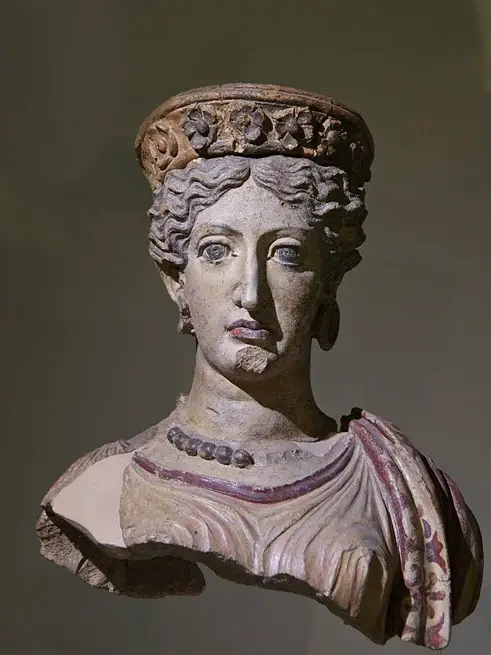
During their initial days, the Romans had significant influence from the Etruscan people and the Greeks. Their way of living, designs of temples, rituals, and deities were similar to theirs.
Juno was the Roman counterpart of Greek Goddess Hera and Etruscan Goddess Uni. Uni was the chief goddess of the Etruscan people, whereas Hera was the chief goddess of the Greeks.
The characteristics, symbols, and depiction of Goddess Juno were similar to Hera and Uni. The cloak they wore was identical, and the heroic warrior-like figure would be depicted in all three of them.
Also, their sacred symbols, cuckoo, lion, peacock, and pomegranate, were identical. The aspect of helping women’s children during childbirth was common in them.
8. Greek Goddess Athena influenced goddess Juno’s depiction
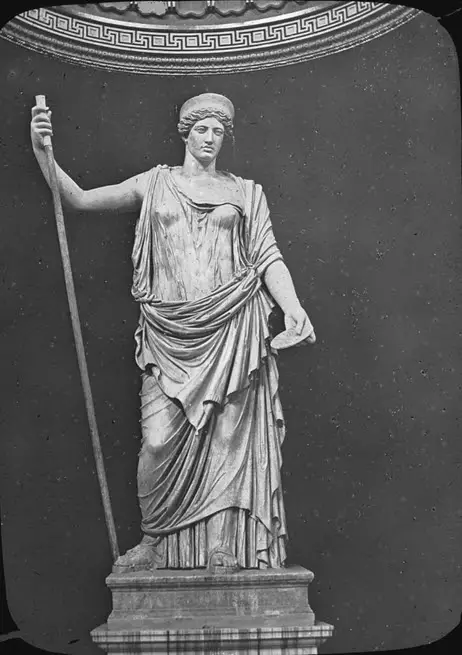
The deities of ancient religion were distinguished by the way they were depicted. Every deity would have its unique depiction or portrayals.
However, Goddess Juno’s depiction was influenced by Greek Goddess Athena. Like Athena, she was depicted as an armed woman, wearing a goatskin cloak, and sometimes holding a goatskin shield ( aegis ).
The other common was the diadem that they both were shown wearing in most of their depictions. Some depictions would show them with crowns instead of the diadem.
They were also portrayed carrying a scepter and riding a golden chariot pulled by the peacock.
7. Juno was known by multiple names and titles
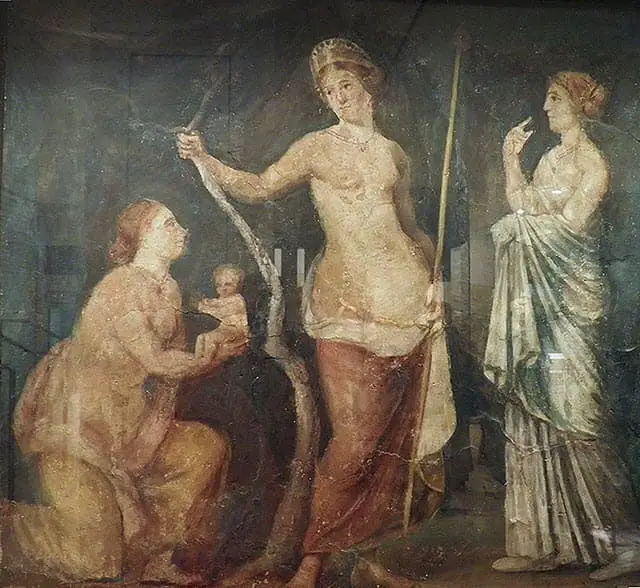
Goddess Juno was honored for various reasons and also named based on that. For instance, she was called Juno Regina for being the Queen of Gods. As the title Regina, she would protect the state as the head of the Roman state.
As Juno Moneta or Juno the Warner, she would bring the news of danger and prepare to fight against it. Romans were able to win numerous fights with the help of goddess Juno as Moneta.
As Juno Sospita or Juno the Savior, she would save the needy. The title was given after she took care of her worshippers, protected them, and saved them in every form. She would primarily help the women and children.
As Juno, the midwife, she would oversee the birth of a child and help both mother and her child during the pregnancy and labor.
As Junot Lucina or Juno who brings light would help bring the enlightenment, light, and life to the ones worshipping her.
6. Juno was one of the three oldest Roman deities
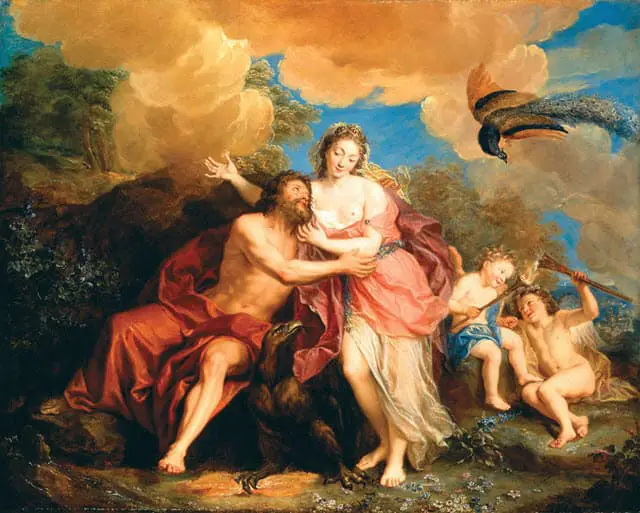
Goddess Juno was amongst the first three deities of the Roman religion. The other two were God Jupiter, the protector of the state, and Juno’s brother/husband, and Goddess Minerva, daughter of Jupiter and goddess of wisdom.
Although Goddess Minerva was the Roman counterpart of the Etruscan goddess Menrva, her characteristics and mythologies were similar to Greek Goddess Athena.
She was associated with wisdom and law and was one of the Roman virgin goddesses. The Romans worshipped her and built cults all over Rome in her honor.
5. Juno’s sacred symbols included Peacock

Every deity in ancient religion had a unique sacred symbol dedicated to them; however, the counterparts’ symbols were similar.
The sacred symbol of Goddess Juno was peacock, cuckoo, lion, cow, cypress, and pomegranate. These symbols were also the holy symbols of her Greek and Etruscan counterparts.
Each symbol associated with her represented something. For instance, pomegranate meant fertility, while cuckoo meant the perfect marital relationship.
Other fruits meant fruitfulness of life, and flowers meant the beauty of life that she could provide to her worshippers.
Also, there was a reason after every symbol to be sacred for her. For instance, Lily was special to her as she was impregnated after touching it once, and the peacock became her sacred animal after it came to her asking for a beautiful voice.
However, all the symbols altogether meant strength, queen quality, marital love, and fruitfulness.
4. Goddess Juno was one of the deities of the Capitoline Triad
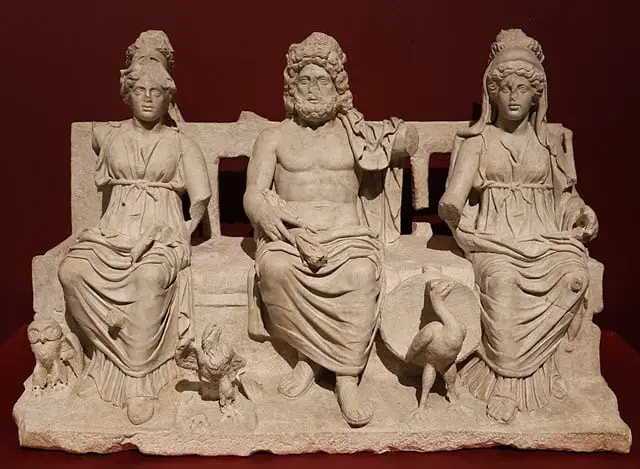
Juno was one of the deities of the Capitoline Triad other two including Jupiter and Minerva. These three deities were worshipped in an elaborate temple located on Capitoline Hill.
They were the most honored deities of ancient Roma. Jupiter was the King of the Gods and husband and brother to Juno. He was the chief deity of Roman state religion and was associated with the sky, thunder, and gods’ king.
Minerva, the daughter of Jupiter, was the goddess of wisdom, strategic warfare, law, victory, and warfare. The Etruscan triad inspired the triad, which included Uni, Menrva, and Tinia.
The group was unusual as it consisted of more females than males, rare in ancient days. Juno was given the title of Juno Capitolia, and numerous temples were built on hills to honor them. The temples were known as Capitolium, meaning temples dedicated to the Capitoline Triad.
3. Juno was associated with multiple deities
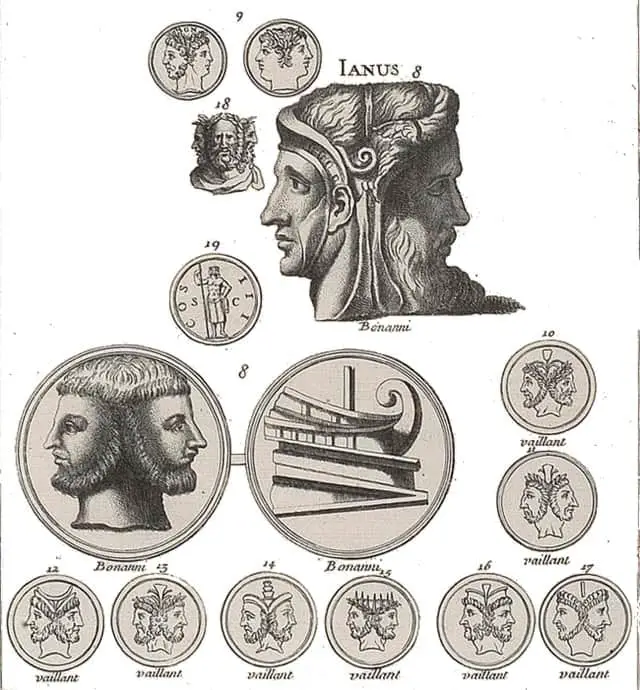
Goddess Juno was associated with multiple deities. One of the major deities was the chief God, Jupiter. The two were divine couples, and their association is one of the most ancient Latin theology.
Under this theology, the local goddess Fortuna was responsible for nursing two infants Juno and Jupiter ( Jove ). These two were the most ancient deities of the Latin world.
Similarly, another important association was between Juno and Janus. Their association reflects the relationship of the female sovereign deity with the deity of passage and beginnings. It was primarily visible in the festival of the Tigillum Sororium celebrated on October 1.
Janus was responsible for protecting the gates of Heaven and Earth and was the guardian of all the passages related to motion and time.
The other association includes Juno and Hercules, Juno and Genius, and Juno and the Penates.
2. Matronalia was the famous ancient festival of Goddess Juno
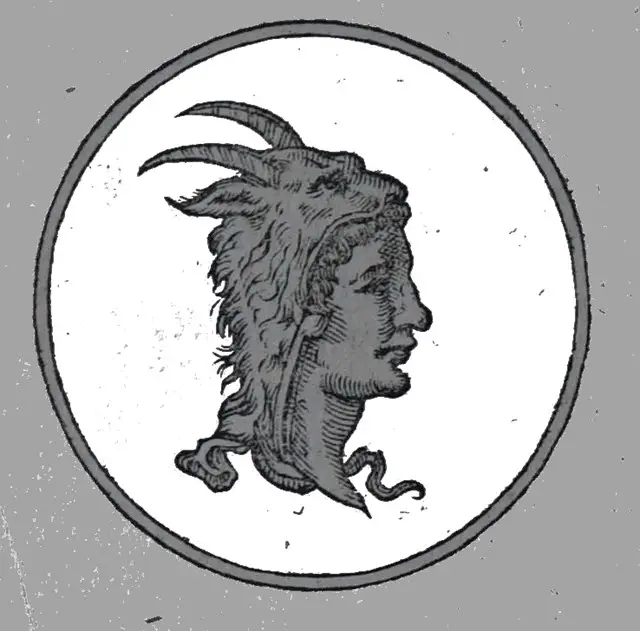
There were two major festivals dedicated to Goddess Juno. The primary one was the Matronalia, also known as Matonales Feriae. It was celebrated every year on the 1st of March, and the exact date was used to worship in the dedicated temples.
This festival was honored as it helped rever the spring renewal of nature, peace after the marriage of Sabine Women, and sacredness of marriage. Women would march to the temple, offer sacrifices of cattle and lambs, and ask for peaceful marital lives, and single women would ask for a loving husband.
Another important festival was the Nonae Caprotinae, also known as the Nones of the Wild Fig. It was celebrated on the 7th of July every year in favor of the female slaves.
The women would run around beating themselves with rods and fists on this day. Men had a very minimum presence during the festival, mainly dedicated to the betterment of women and slaves.
1. Temples and cults were spread all over the Roman Empire
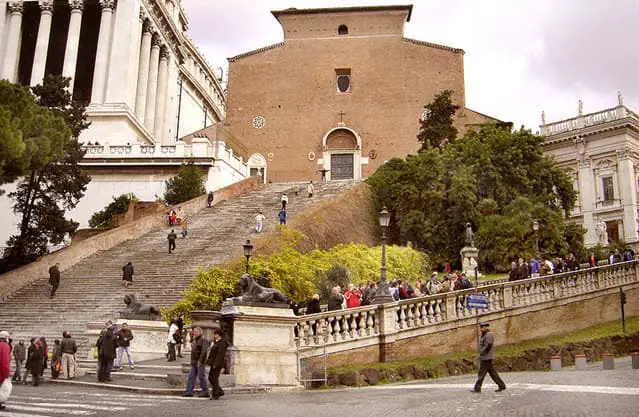
Numerous cults and temples were built all over the Roman Empire to honor the Queen of Gods. However, only two temples have been recorded in the historical events and books.
The ancient Temple of Juno Moneta, built on the Arx or citadel located on Capitoline Hill, was one.
The other included was on the Esquiline built around the 4th Century BC.
As per history, the Etruscans worshipped Juno in the name of Uni before the Romans defeated them in 396 BC. They dedicated this temple in the name of Juno, and since then, they have been left alone from the goddess’s protection.
Conclusion
Goddess Juno’s name was derived from the Latin word iuvenis, meaning youth. The Latin word iuvenis was derived from iunes meaning a cow that has not had a calf.
Like her name, she was the goddess of youth and protected women, especially the young ones.
She was one of the most honored goddesses in the Roman Empire and was an inspirational figure for almost every woman.
